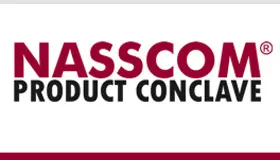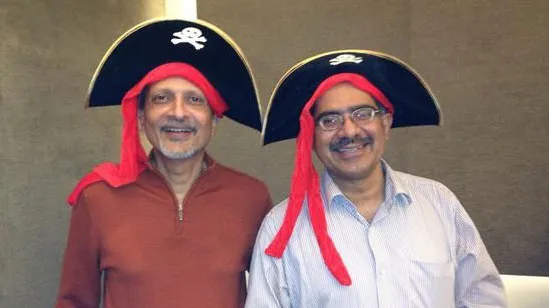NASSCOM Product Conclave 2012 Reflects the Arrival of a Vibrant Product Ecosystem in India

The kind of conversations that you heard around product companies are changing. From an ambitious “billion dollar companies” born out of India (the overarching goal of NASSCOM Product Conclave last year), the focus is shifting to the bold prediction of product software’s robust growth, in the coming decade and half, eliminating poverty. In his opening remarks, Sharad Sharma, NASSCOM Product Chair (who I hear across the board is an inspiration to the whole community of product guys) called product entrepreneurs by labels as aggressive as “arms merchants” and “disruptors.” He went on to make a bold prediction: “product industry will lift India out of poverty.” He sought to portray Cloud as instrumental in product space becoming an affordable, productive, and collaborative space that would transform public health centres and schools in India.Reflecting the evolution of NPC, Som Mittal, President of NASSCOM, said that NPC is a great platform to compete and collaborate. He also revealed that NASSCOM is entering into an MoU with SIDBI to provide risk capital to small companies, which would include IP-led product companies. (SIDBI was provided a fund of Rs. 500 crores in the Union budget for investing in SMBs.) He saw angels, investors, and incubators becoming active in the product ecosystem. Mr. Mittal’s statement that CIOs were open to buying from startups should give product entrepreneurs a sweet ring in the ear.
M. Rangasami, co-host of NPC 2012, saw three phases of evolution of the product industry in India: mimicking US to get funding initially, growth of enterprise software in the next decade, followed mobile and Cloud computing causing a paradigm shift in this decade. He was optimistic that software products offered at low price points offered by product entrepreneurs (leveraging the Cloud) will be consumed by thousands of customers.
Naveen Tewari’s Leap of Faith
In a sort of answer to the overarching question of a billion dollar business emerging from India (the same time around last year when Flipkart was rumoured to have obtained a billion dollar valuation), InMobi, a mobile advertising ecosystem player, has emerged as perhaps the biggest company to grow out of India in the last 5 years. Naveen Tewari’s keynote should be remembered for something alien to product entrepreneurs in India: talking numbers that are in the million and billion range—a trillion ads providing $2 billion worth of economic transactions, reaching 80 million people across 165 countries. The mercurial growth of InMobi has been made possible by the “Think Big” approach of the team and not being complacent with the present status. The company is devising methods to grow five to ten times in the 5 years from now. Naveen Tewari said that massive scale happens with huge risks and the InMobi team was willing to bet on it. Aiming big, going global, and hiring the best are the three mantras Naveen Tewari proposed to build a similar company in India.

Ram Shriram’s Bet on Mobile and Tim Parsey’s REM
The man with the Midas touch could not touch down at Bangalore as personal commitment stayed him put in the United States. Ram Shriram of Sherpalo Ventures who delivered the keynote on video sought to paint a glorious future for mobile phone-based innovations going by the sheer number of them. (An exclusive coverage will be done on his address.)
As M. Rangsami announced the TED-like speech of Tim Parsey of Yahoo!, who has changed seven domains and as many companies, it brought a fresh whiff of outside air. Instead of thinking inside, this change of thinking by organizers to bring in someone with a different perspective seemed to have carried well. Tim Parsey gave an absorbing, exuberant keynote on design being important for products. Using the bicycle as an example of his REM framework, he translated the evolution of bicycle to products within the REM framework. Rational value, Emotional, and Meaningful are important components of the design, in Tim Parsey’s philosophy. A rational value in terms of performance and new capabilities, designing for feeling, classic minimalist, and ultraminimalist (appealing emotionally) styles, and being meaningful (aligning to values and evoking personal memories) make a product appealing to the customer. The design principles and design culture should be enticing for the employees as well as end customers for whom the product is aimed at, he emphasized.
So many of them, which one to go?—Indian SMB market too small
End of keynotes opened up to six parallel sessions and thankfully one was cancelled. The sheer excitement of peeping into several sessions would have satiated the delegate but wouldn’t have had a carry on their learning. Color codes in the Agenda clearly showed the prospective audience base for the sessions. If I would have made a point of covering them all, I would have left the readers disappointed with piecemeal quotes that wouldn’t serve purpose. I stayed on with one session per slot. In a curiosity to understand the Indian market, I walked in with a lot of hope of three wise men telling us how Indian market so big as an ocean could be tamed with a magic wand. In the end, despite “doom and gloom” sought to be avoided, Indian market despite millions of potential customers turns to be less attractive for a product entrepreneur if segments are suitably sliced. Pari Natarajan of Zinnov showed the microcluster of leather SMEs finally boiling down to 2000 users. Terming product business in India for SMBs non-VC fundable (implying lack of scale), Pari however said e-commerce is a robust segment. Naru Narayanan, investor, mentor, and former executive selling retail products across India, cautioned the lure of big numbers. He sought to convey that any big number showcased should be treated with caution and provided his guestimate method of arriving at a rational figure. Vijay Anand put the conversation in perspective by bringing down the glorious 900 million mobile users to an active 300 million (multiple SIMs being the discounting factor). Despite the promise of the billion plus, Indian market is yet to become technophilic. Technology touches a niche and not yet mainstream.
This led me to a conversation with Kishore Mandyam of PK4 Software, who led a panel on AWSME Survey, the Nielsen survey commissioned by NASSCOM to look into the SMB market in India. This is an awareness survey by NASSCOM to understand what ails the SMBs in terms of buying software. In over a 1000 SMBs surveyed, it was known that only 30% of SMB owners were approached by a software provider and for example in Kochi, 86% of SMBs were not approached. Out of them, only 9% know the term Cloud computing. To make SMBs adopt technology massively, NASSCOM mandated this survey to drive its Software Laga Do Yaar! Mission. The survey will be used to further enhance the market penetration of software by understanding pain points, influencers, and decision makers by a follow-up engagement perhaps by using case studies to influence buying decisions.
Pivoting is painful is what I got to understand in the panel discussion on pivoting. Naveen Tewari, Ashish Kashyap of Ibibo, Rajat Agarwalla of RJ Softwares were engaged in a panel led by Shruthi Chella of Groupon. Instituting pivot as part of culture is next to impossible. Pivoting in a small company is easier whereas in a big company, it is first tested within a small group before massive adoption. Customer needs, market opportunities, and competitive advantage drive pivoting. Ashish called pivoting as “changing punctured tyre of a car in motion.”
As the afternoon set in and more sessions awaited, the delegates swarmed the lunch area exchanging contact details and engaged in conversations.
- Venkatesh Krishnamoorthy, Chief Evangelist, YourStory.in







